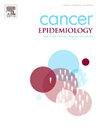社会经济个体和生态因素对弥漫性大b细胞淋巴瘤极端诊断至治疗间隔的影响
IF 2.3
3区 医学
Q3 ONCOLOGY
引用次数: 0
摘要
弥漫性大b细胞淋巴瘤(DLBCL)是一种侵袭性的但有可能治愈的淋巴细胞恶性肿瘤,需要及时治疗。我们调查了个体社会经济地位和家庭区域水平(生态)因素对DLBCL患者诊断至治疗间隔(DTI)的影响,重点关注法国现实世界队列(REALYSA)的极端延迟。方法采用多中心前瞻性队列分析新诊断的DLBCL患者。DTI定义为从确诊到一线治疗之间的持续时间(以天为单位)。使用多项模型将短DTI和长DTI(第10百分位数)与中间DTI进行比较,以确定与极端DTI相关的因素。考虑了社会人口统计数据(包括性别、教育、就业、婚姻状况、社会支持(SSQ6-score)……)和生态特征(法国剥夺指数、当地全科医生的可及性)。结果在889例新诊断的DLBCL患者中(中位年龄66岁,49 % aaIPI≥1,35 % b症状,33 %大体积疾病),中位DTI为25天(四分位数间距:15-39天)。极端dti的第10百分位和第90百分位分别为<; 8和>; 50天。在多变量分析中,与短DTI相关的因素包括aaIPI (OR=3.03, CI95 %[1.44-6.41])、大体积疾病(OR=3.06, CI95 %[1.68-5.58])和B症状(OR=2.35, CI95 %[1.30-4.25]),这表明对侵袭性症状需要加快治疗。相反,与长DTI相关的因素包括年龄较大(or >80 y = 3.31,CI95 %[1.39-7.89]),蓝领工人或农民(or =2.36, CI95 %[1.18-4.73]),或在活检和初始治疗之间改变治疗设备类型。在这个新诊断的DLBCL患者的大型现实队列中,年龄、职业状况和患者的途径与治疗延误时间很长有关。简化dti的干预措施,特别是对老年人和/或蓝领或农民患者,以及那些改变治疗设施的患者,有必要提高护理质量。本文章由计算机程序翻译,如有差异,请以英文原文为准。
Impact of socioeconomic individual and ecological factors on extreme diagnosis-to-treatment interval in diffuse large B-Cell lymphoma in the French real-world cohort REALYSA
Introduction
Diffuse large B-cell lymphoma (DLBCL) is an aggressive though potentially curable lymphoid malignancy requiring timely treatment initiation. We investigated the impact of individual socioeconomic status and home area-level (ecological) factors on the diagnosis-to-treatment interval (DTI) in DLBCL patients, focusing on extreme delays in a French real-world cohort (REALYSA).
Methods
We analyzed patients with newly diagnosed DLBCL in the multicentric prospective cohort. DTI was defined as a duration in days between diagnosis confirmation and first-line therapy. Short and long DTIs (10th percentiles) were compared to intermediate DTI using multinomial models to identify factors associated with extreme DTIs. Socio-demographic data (including sex, education, employment, marital status, social support (SSQ6-score)…) and ecological characteristics (French deprivation index, local accessibility to general practitioners) were considered.
Results
Among 889 newly diagnosed DLBCL patients (median age 66 years, 49 % with aaIPI ≥1, 35 % with B-symptoms, 33 % with bulky disease), median DTI was 25 days (interquartile range: 15–39 days). The 10th- and 90th-percentile for extreme DTIs were < 8 and > 50 days respectively. In multivariable analysis, factors associated with short DTI included aaIPI (OR=3.03, CI95 %[1.44–6.41]), bulky disease (OR=3.06, CI95 %[1.68–5.58]), and B symptoms (OR=2.35, CI95 %[1.30–4.25]) - indicating expedited treatment for aggressive presentations. Conversely, factors associated with long DTI included older age (OR>80 y = 3.31, CI95 %[1.39–7.89]), being a blue-collar worker or farmer (OR=2.36, CI95 %[1.18–4.73]), or changing type of treatment facility between biopsy and initial treatment.
Conclusion
In this large real-world cohort of newly diagnosed DLBCL patients, age, occupational status, and patients’ pathway were linked to very long delays to treatment. Interventions to streamline DTIs, especially for older and/or blue-collar or farmer patients, and for those changing facility of treatment, are warranted to improve quality of care.
求助全文
通过发布文献求助,成功后即可免费获取论文全文。
去求助
来源期刊

Cancer Epidemiology
医学-肿瘤学
CiteScore
4.50
自引率
3.80%
发文量
200
审稿时长
39 days
期刊介绍:
Cancer Epidemiology is dedicated to increasing understanding about cancer causes, prevention and control. The scope of the journal embraces all aspects of cancer epidemiology including:
• Descriptive epidemiology
• Studies of risk factors for disease initiation, development and prognosis
• Screening and early detection
• Prevention and control
• Methodological issues
The journal publishes original research articles (full length and short reports), systematic reviews and meta-analyses, editorials, commentaries and letters to the editor commenting on previously published research.
 求助内容:
求助内容: 应助结果提醒方式:
应助结果提醒方式:


